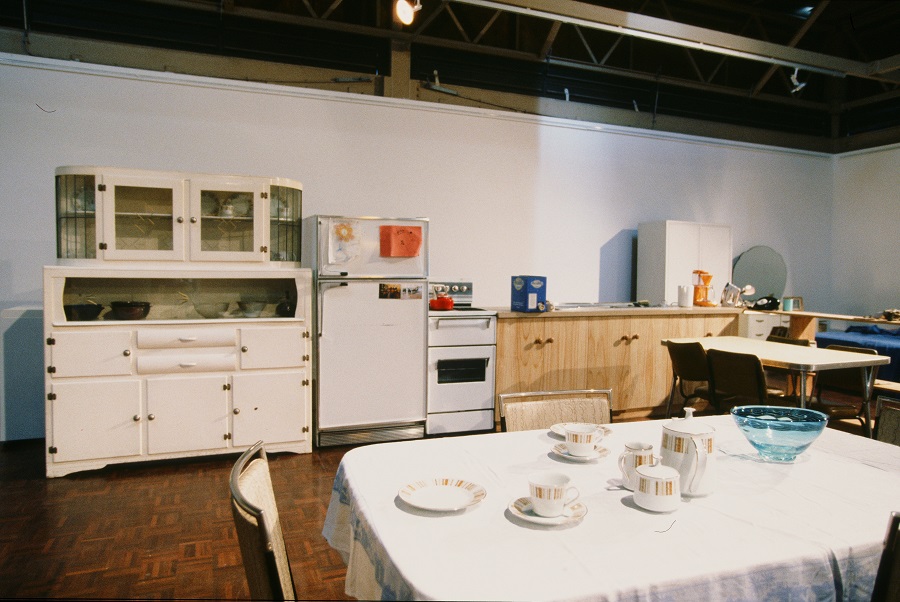1994 - Ngurra (camp/home/country): Dolly Nampijinpa Daniels and Anne Mosey
Ngurra (camp/home/country): Dolly Nampijinpa Daniels and Anne Mosey / 24 February – 26 March 1994
Image: Dolly Nampijinpa Daniels and Anne Mosey, Ngurra (camp/home/country), 1994, installation view, University of South Australia Art Museum.
ngurra (camp/home/country) is a collaborative installation by Anne Mosey and Dolly Nampijinpa Daniels. The title is derived from the Warlpiri word ‘ngurra’, which can mean either camp, home or country.
In their installation for the 9th Biennale of Sydney (1992), Nampijinpa Daniels and Mosey created parallel domestic environments, characteristic of each artist’s life, in a poignant display of cultural contrasts. The artists will develop and extend these themes at the University of South Australia Art Museum in a space which is significantly larger and more sympathetic than that provided by the Biennale, and with the benefit of their greater subsequent experience in the creation of such a work.
Nampijinpa Daniels is a Warlpiri woman from around Yuendumu who, along with her family, are the traditional owners of many Dreaming sites in that area. Mosey’s relationship to the land, on the other hand, is a family history of six generations of European settlement in the mid-north of South Australia – a history of explorers and pastoralists. The collaboration between these artists does not assume that there is easy progress to an ideal consensus. It may be, in fact, that the proposals of each artist, although sympathetically joined in friendship, will reflect positions of mutual independence. The crucial question of Aboriginal and non-Aboriginal relationship will thus be a major element in the project’s outcomes.
A University of South Australia Art Museum exhibition for the 1994 Adelaide Festival. Catalogue essays by Petronella Vaarzon–Morel and Kerry Giles. Assisted by the Commonwealth Government through the Australia Council, its arts funding and advisory body, and also by the Women’s Suffrage Centenary of South Australia 1984–1994.

Image: Dolly Nampijinpa Daniels and Anne Mosey, Ngurra (camp/home/country), 1994, installation view, University of South Australia Art Museum.

Image: Dolly Nampijinpa Daniels and Anne Mosey, Ngurra (camp/home/country), 1994, installation view, University of South Australia Art Museum.

Image: Dolly Nampijinpa Daniels and Anne Mosey, Ngurra (camp/home/country), 1994, installation view, University of South Australia Art Museum.

Image: Dolly Nampijinpa Daniels and Anne Mosey, Ngurra (camp/home/country), 1994, installation view, University of South Australia Art Museum.